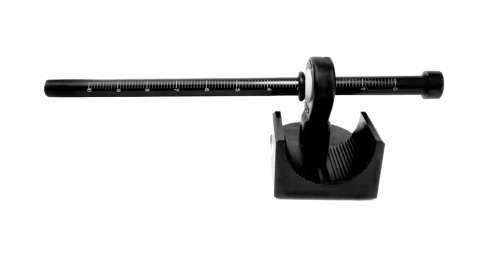New Generation of Laxometer
Parsa Mohebi, MD, is a hair transplant surgeon and the medical director of Parsa Mohebi Hair Restoration. Dr. Mohebi is a Diplomate of the American Board of Hair Restoration Surgery. He did his surgical residency at the University of New Mexico and York Hospital Dr. Parsa Mohebi pursued an interest in surgical research at Johns Hopkins School of Medicine, Department of Surgical Sciences. At Johns Hopkins, he performed several studies on wound healing and hair growth, using growth factors and gene therapy methods. Dr. Mohebi completed a fellowship in surgical hair restoration at New Hair Institute (NHI).
 ABSTRACT:
ABSTRACT:
The first generation of the Laxometer (Laxometer-I) was previously introduced along with its applications for scalp laxity assessment before hair transplant surgeries. Using Laxometer-I, we proved that scalp exercises can really improve the mobility of a patient’s scalp through serial scalp laxity measurement. We also introduced “sequential strip removal” utilizing the Laxometer in order to increase the safety of hair transplant procedures that involve a large number of grafts.
Over the last few years and through further experience with the Laxometer, we became more aware of its pros and cons. Although the Laxometer-I has been a great step forward in understanding the mechanical forces involved in wound closure, it has had its limitations. The biggest challenge we had with the first generation of Laxometer was the impact of an individual’s skin characteristics (such as thickness and rigidity of skin) on the Laxometer readings. Laxometer-I measures the vertical mobility of an individual’s scalp using two approximating jaws. The effect of tissue mass that was being squeezed between the two jaws of the Laxometer-I was an important variable that we could not disregard.
That variation could be secondary to the individual’s amount of subcutaneous fat, thickness and stiffness of skin. This diversity prevented the Laxometer readings from being always accurate. At times, this inconsistency left us with more laxity in the scalp than was expected by the Laxometer. That could lead the operator to be too conservative with the width of strip in order to avoid the risk of wound complications. This limitation of the Laxometer-I inspired us to develop another prototype to resolve the problem. The Second Generation of Laxometer (Laxometer-11) was made with only one pad to measure the vertical mobility of an individual’s scalp.
The new prototype (Laxometer-11) does not require measuring the scalp laxity through approximating pads therefore we could eliminate the impact of individual skin characteristics. We designed a single pad Laxometer that can measure the vertical mobility of the scalp by shifting the skin up and down.
We are currently reviewing the measured values of the Laxometer-TI in comparison with the actual closing forces. We utilize a force meter on the edges of the wound in order to gauge the actual closing tension. Initial results have been promising and indicate that the Laxometer-11 could be used as a valuable tool in pre-operative evaluation. Discussion: With today’s increasing demand for transplanting more hair in fewer surgical sessions, precise gauging of scalp mobility is an essential factor in pre-operative preparation. The Laxometer-II offers a more precise technique for measuring scalp laxity while it eliminates the limitations of previous methods of scalp laxity measurement.
This publication was presented by Dr. Parsa Mohebi at the International Society of Hair Restoration Surgeries 19th Annual Scientific Meeting in Anchorage, Alaska.